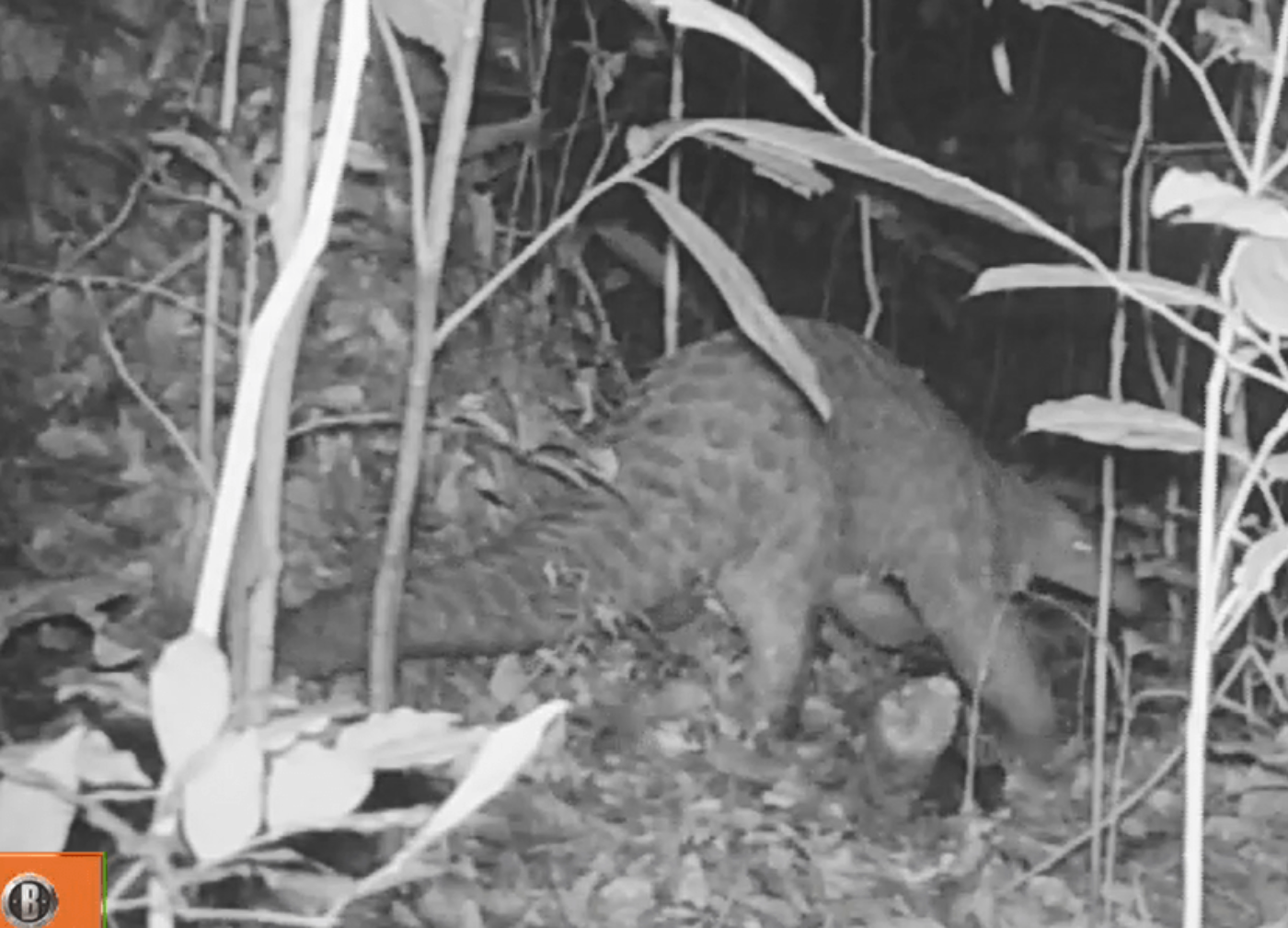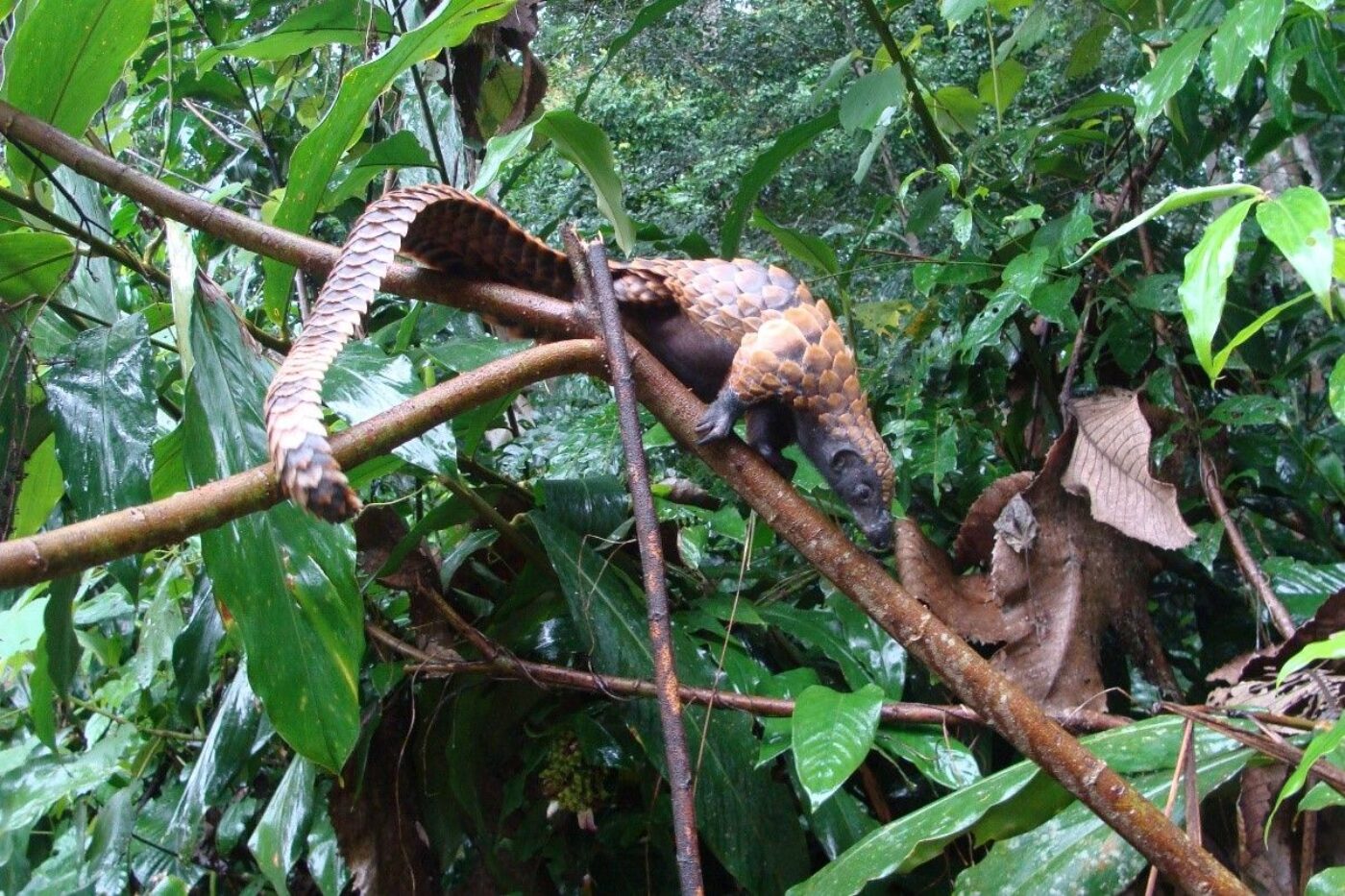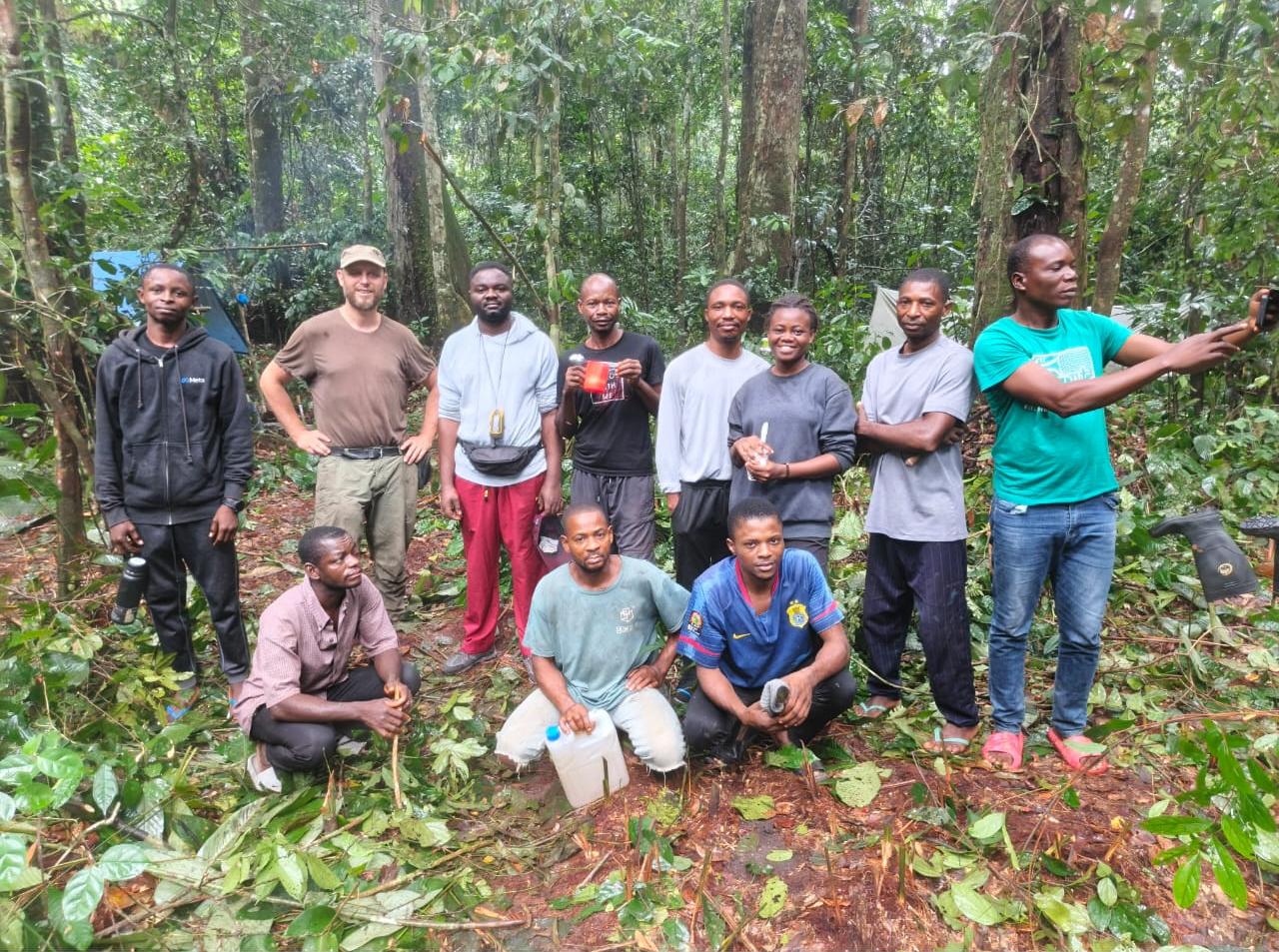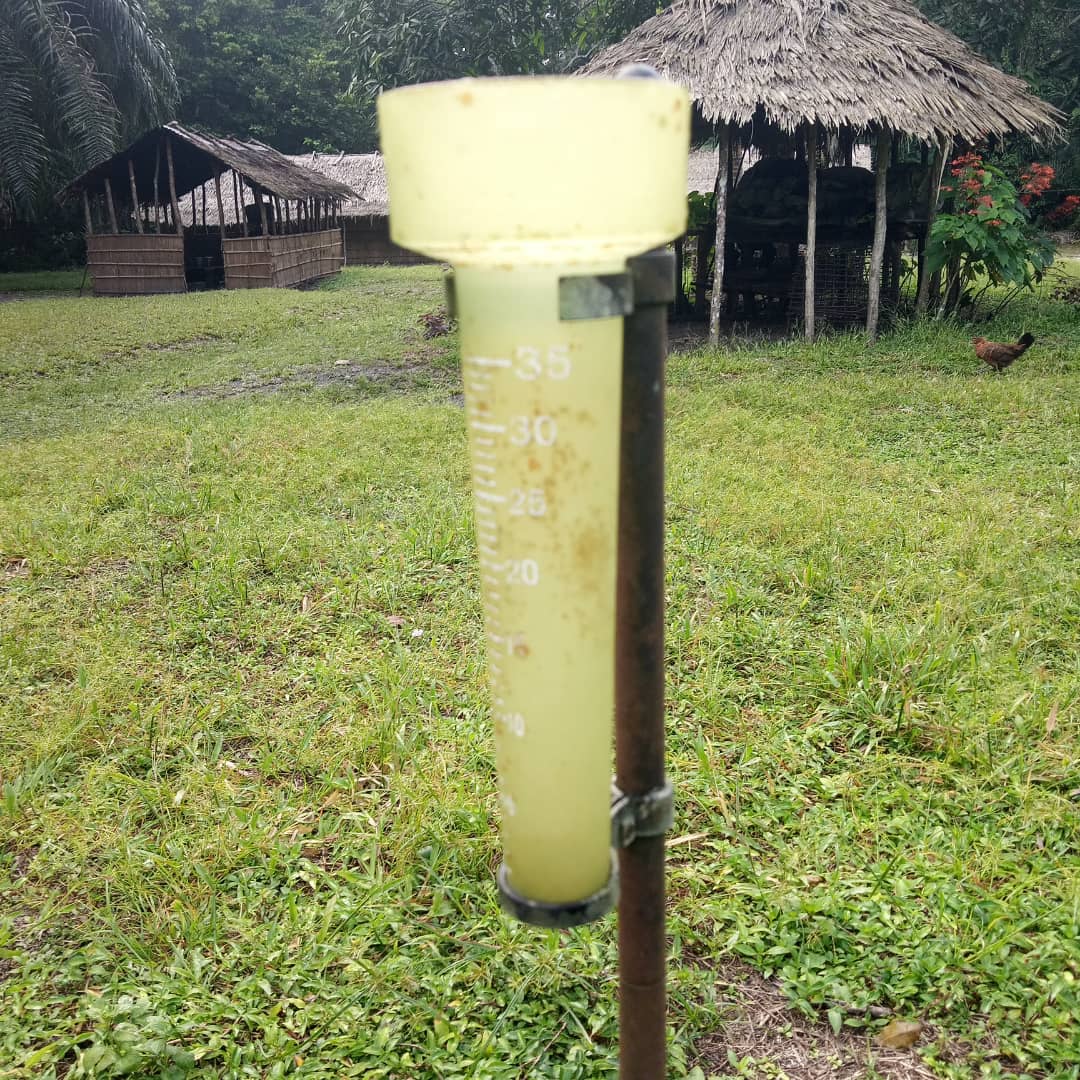Pangolins are endangered, in fact they are the most trafficked mammal worldwide, the survival of the species is sadly not assured and there is a serious risk that they will become extinct in the near future. This is why protected areas such as the Salonga National Park are particularly important as a refuge to protect them and to help preserve the species.
The National Park of Salonga, one of the last and remotest primary rainforests in the world, with its ancient giant trees, grassy clearings, vast swamps and miles of streams and rivers, is home to three out of four African pangolin species: the giant pangolin, the white-bellied pangolin and the long-tailed pangolin – all one species but with different specialties.
Three pangolins – different skills
The dense rainforests of Salonga are the habitat of the largest pangolin, the giant pangolin. Most of the time it moves on all four legs. Sometimes it walks upright on its two hind legs.
The pangolin spends its sleeping and resting periods in burrows in the ground, in thickets of plants or under large tree roots. Because its tail is hardly movable, the giant pangolin can neither climb nor swim well. Instead, the tail helps keep the balance when it stands upright on its hind legs and walks.
The front and hind legs of pangolins are short and strong, with the hind legs being slightly longer than the front legs. The giant pangolin can also stand and walk on its two hind legs.
White-bellied pangolins and long-tailed pangolins, on the other hand, are good swimmers. In the water, they move much like snakes, with the flap of their tails propelling them forward.
The white-bellied pangolin and the long-tailed pangolin live in the canopy. Their long flexible tails and extra-long hind foot claws make them excellent climbers. They can even anchor their splayed scales in the bark of trees. To rest or sleep, they hide in tree cavities or on densely leafed branches.
The pangolin has the ability to curl up, hence its name comes from the Malay word “pengguling,” which means “one who curls up.”
Almost all parts of the body are covered with large, sharp-edged horn scales. They are arranged like the tiles on house roofs. The scales are gray-brown to yellow-brown in color. Only on the face, belly and the inner sides of the legs there are no scales. These parts are covered with hair.
The pangolin’s scale dress looks like a protective armor. No other mammal wears a similar horned armor. Yet the scales are really practical.
The several hundred to thousand individual scales provide excellent protection from enemies. The scales of the pangolins are individually movable. In this way, pesky termites and ants that crawl around on the body of the pangolin can be crushed under the scales.
When the pangolin curls up, the sharp edges of the scales stick out and form a protective carapace.
The stomach of the pangolin has a horny layer. This protects it from the bites and poison of ants and termites. This is where the insects are crushed.
Pangolins feed almost exclusively on ants and termites. They search for their burrows and nests on the ground and in trees and break them open with their strong claws on their hind and front feet. With their long, sticky tongues, they catch the small insects and swallow them as whole.
Solo on the road
Pangolins are mostly solitary and only come together to mate. Mating looks like a fight between male and female. Both pangolins beat their chests against each other until the female surrenders. She then clings to the male’s tail and is pulled by him to the mating site. Depending on the species, a single baby pangolin is usually born after two to five months.
The baby already wears a scale dress at birth. However, the scales are still quite soft and only become hard after a few days. Depending on the species, the young pangolin spends the first days or weeks together with its mother in a safe burrow or in a tree hollow. The first excursions are made by the pangolin baby on the mother’s back or tail.
When a new baby pangolin is born, the big sibling animal is old enough to go out into the world on its own. This usually happens after about five months. Giant pangolins’ burrows can be up to five meters deep underground and up to 40 meters long.
Pangolins in danger
Pangolins are generally not doing well, all eight pangolin species in Africa and Asia are threatened. Poaching and illegal trade endanger their population drastically. Even in protected areas the survival of the animals is not ensured as illegal hunting still exists.
The meat and scales of pangolins are especially popular in Africa, China and Southeast Asia. In these regions, many people believe the scales can cure diseases and deter evil spirits. In fact, the scales are only made of a substance called keratin, which is also what our toenails and fingernails are made of.
Unfortunately, pangolins are an easy prey for poachers, as the endangered animals often curl up into a ball and lie there motionlessly, so that the poachers can easily pick them up.
Not only poaching is a danger for pangolins. Their habitat, too, is increasingly destroyed and such contributes to the decline of populations. Forest areas are still being cut down and converted into fields and plantations or fragmented through road construction. Therefore, a protected area like Salonga National Park is extremely important for the survival of these incredible animals.
Since 2016, WWF and ICCN jointly work to preserve the Salonga National Park focusing particularly on rare species such as bonobos, forest elephants and pangolins.





